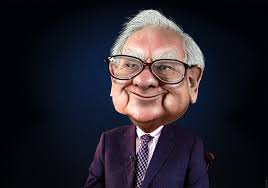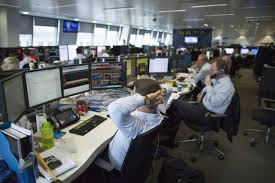By Mark W. Gaffney
For WhaleWisdom.com
Turns out Warren Buffett and Jimmy Buffett are not related. For years the world’s third richest man and the “Margaritaville” singer-songwriter thought they might share ancestors. But DNA testing has apparently ruled that out.
Still, the hedge fund manager and the musician/businessman have things in common. For one, they’re both very rich — though Jimmy Buffett’s estimated $550 million net worth pales in comparison to Warren’s $85 billion.
Another similarity: Both are past their prime when it comes to their main professions — Jimmy Buffett’s creative peak as a songwriter was hit decades ago. Likewise, the performance of Warren Buffett’s Berkshire Hathaway Fund saw its best returns many years back. Both Buffetts’ star status is built on accomplishments from long ago.
That’s how it is with most of the famous hedge fund managers – their reputations as wealth creators are based on returns which occurred when their funds were new and small. With some exceptions, the recent performance of the big-name hedge fund managers has been mediocre.
Nonetheless, investors hang on every word of titans like Buffett, Klarman and Soros, following their media comments intently, and mimicking their portfolios in an effort to profit from their genius.
A popular approach of hedge fund followers is to “clone” the investments of top managers by copying their portfolios. Funds with over $100 million in assets disclose their positions quarterly via 13F filings. While there are some limitations to this strategy, cloning the portfolios of top managers can be very profitable. It gives investors who don’t have millions to invest access to the top ideas of the best hedge fund managers — without paying the hefty fees hedge funds charge.
Here are the ten most popular hedge funds/managers followed by investors at WhaleWisdom.com*:
| Most Popular Hedge Funds | Size | 13F Value $B | 3 YEAR AVG RETURN % |
|---|---|---|---|
| Warren Buffett, Berkshire Hathaway | Large | 188.9 | 8.81% |
| Seth Klarman, Baupost Group | Large | 10.4 | 2.39% |
| Julian & Felix Baker, Baker Brothers Investments | Large | 11.8 | 8.06% |
| George Soros, Soros Fund | Mid | 6.2 | 2.10% |
| David Einhorn, Greenlight Capital | Mid | 4 | 3.51% |
| David Tepper, Appaloosa LP | Large | 9.7 | 11.09% |
| Bill Ackman, Pershing Square | Mid | 4.8 | -5.34% |
| Stephen Mandel, Lone Pine Capital | Large | 19.7 | 9.17% |
| Carl C. Icahn | Large | 20.1 | 20.19% |
| Chase Coleman, Tiger Global Management | Large | 15 | 12.42% |
*based on funds that filed a 1st qtr. 2018 13F
Assets under management (AUM) is the total value of long positions reported in the funds’ 1st quarter 13F filing. Three-year average return reflects the equal-weighted performance of the top 10 stocks held by the fund. If you’d invested equal amounts of money in the top ten holdings of the fund and rebalanced the portfolio quarterly when 13F positions were updated, you would have achieved these returns.
All of the above managers are rock stars in the hedge fund world, famous for creating great wealth for themselves and their investors over the years.
However, here’s a secret that many followers of the hedge fund giants may not realize: Like classic rock stars who had their biggest hits years ago, the famous hedge fund managers’ reputations were built when their multi-billion-dollar hedge funds were younger, smaller and more profitable.
From 2001 through 2006, Warren Buffett’s Berkshire Hathaway Fund returned an average of 11.4% compared to 3.9% total return for the S&P 500. (Based on the equal-weight returns of the fund’s 13F holdings. The actual net returns received by fund investors will be different – probably less due to fees.) Since 2006, Buffett’s annualized return of 7.7% has been pedestrian — about the same as the S&P 500’s total return.
Seth Klarman is another value-investing hedge fund giant. His fund, Baupost Group, averaged a 17.5% 13F-based annual return from 2001 through 2006, trouncing the S&P 500 by 13.6% a year. But since 2006, Baupost Group has averaged 5.9% annually. The S&P 500’s total return has beaten Klarman’s fund by about 2 percent annually since 2006.
As you can see below, from 2001 to 2006, when Baupost was posting world-beating returns, the fund’s 13F AUM ranged from $650 to $750 million. Since 2009, Baupost’s 13F market value has risen from about $1 billion to over $10 billion as of March 2018.
Baupost Group 13F AUM 2001 to present
Source: WhaleWisdom.com
Declining hedge fund performance as AUM increases is the rule, not the exception. Over the years, many studies have established a correlation between rising fund AUM and diminishing returns. Put another way: Small hedge funds outperform large hedge funds.
Below are the top performing hedge funds over the last three years based on 13F filings. We’ve filtered out funds with less than 10 and more than 200 holdings in their latest 13F.
| TOP PERFORMING HEDGE FUNDS LAST 3 YEARS | Fund Size | Holdings | 13F Market Value | 3 Yr Perf Annualized |
|---|---|---|---|---|
| M3F, INC. | Micro | 24 | 86,170,000 | 41.99 |
| OSMIUM PARTNERS, LLC | Micro | 18 | 151,922,000 | 40.4 |
| HARBOURVEST PARTNERS LLC | Micro | 20 | 92,909,000 | 33.65 |
| CENTERBRIDGE PARTNERS, L.P. | Small | 18 | 1,016,477,000 | 30.83 |
| BIRCH RUN CAPITAL ADVISORS, LP | Small | 18 | 256,959,000 | 29.51 |
| CANNELL CAPITAL LLC | Small | 59 | 311,168,000 | 29.46 |
| WHALE ROCK CAPITAL MANAGEMENT LLC | Mid | 30 | 2,943,291,000 | 29.05 |
| BVF INC | Small | 43 | 986,483,000 | 27.46 |
| PL CAPITAL ADVISORS, LLC | Small | 32 | 357,099,000 | 26.97 |
| S SQUARED TECHNOLOGY, LLC | Micro | 43 | 116,804,000 | 25.47 |
Source: WhaleWisdom.com
The top performers in the hedge fund universe over the last three years have been small or very small (micro) based on 13F AUM. Only Whale Rock Capital, a mid-sized fund with $2.94 billion in AUM, cracked the top ten.
So why do small hedge funds outperform large hedge funds? Here are a few possible explanations:
Liquidity issues
If you’re a fund manager buying $500K of a moderately liquid stock, you can probably do it easily — without pushing the stock higher. Likewise, when you go to sell, you can likely avoid price “slippage” as you liquidate. As a smaller fund with smaller positions, buying and selling probably has minimal impact on performance.
However, buying $100 million of the same stock is more problematic. Market makers may see your buying and “front run” you, pushing prices higher before you complete the position. On the way out, you can’t just dump all your shares on the market – the stock’s price would plunge. You have to sell the position over days. If you’re not careful, entry and exit inefficiencies can be a major drag on performance.
So as successful hedge funds attract ever more capital, they are forced to gravitate toward large-cap, liquid stocks to efficiently invest their billions of AUM. And highly liquid stocks may not offer the same profit potential as those with less liquidity.
Hierarchy Costs
A manager of a small firm can do much of a fund’s research personally. But as any entrepreneur knows, as a firm grows, a point is reached where the founder can’t do everything herself. Crucial tasks must be delegated. This 2009 study showed that at hedge funds “the number of principals compounds the effects of size on hedge fund performance. Specifically, the alpha spread between small and large funds is almost twice as large for multi-principal funds as it is for single-principal funds.” Large funds must delegate responsibilities to other, possibly less talented analysts, negatively impacting performance.
Skin in the game
When hedge funds start out, most of the capital under management is usually that of the principal(s)/manager(s). If the portfolio does well, the principals do well, their clients do well, and the fund can raise more money. But as AUM gets larger, a greater percent of the principals’ compensation comes from the asset-based management fee. As AUM grows, so does the principals’ incentive to focus on raising more capital versus generating great performance.
Small fund managers tend to have more of their own money invested in the fund. As such they may be more focused on portfolio returns versus raising capital. This study suggests that investors are more likely to earn higher returns by investing in small hedge funds whose managers have more “skin in the game.”
Small Cap stocks
Small hedge funds tend to invest more in companies with smaller capitalizations. While this may result in greater volatility of returns, on balance small cap stocks tend to outperform large caps. This so called “Small Firm Anomaly” may help explain small hedge fund outperformance.
Why do small stocks outperform?
Small public companies often have little or no analyst coverage, and so may have unknown potential. Smaller companies have greater growth potential than large companies: A tiny public company can triple its revenues with one contract — that’s not going to happen to Apple Computer. Likewise, when small firms fix problems, the resulting improvement in profits can drive big price gains. Small cap stocks also tend to have lower stock prices, resulting in greater price appreciation compared to big firms with higher prices.
For talented managers, the small-cap sector may offer greater opportunity to apply their skills at finding emerging and undervalued companies.
So, Jimmy Buffett isn’t writing hits like “Margaritaville” anymore; and Warren Buffett isn’t generating returns like Berkshire Hathaway had back in the day. They’re still good at what they do and have more fans than ever.
But if you’re looking for stellar returns by following the leading hedge funds with the best ideas, you’ll likely make more money studying the moves of the small fund managers, the ones who aren’t famous. Yet.





[…] Note that most of the hedge funds on the list are relatively small and obscure. Why? Because small, less well-known hedge funds typically outperform the larger, more famous […]
Comments are closed.